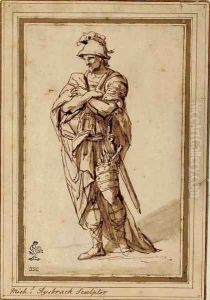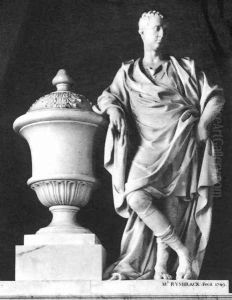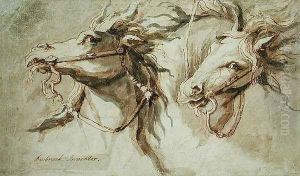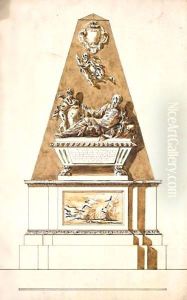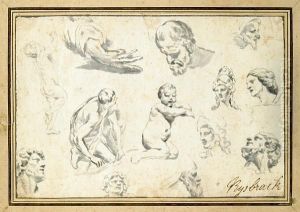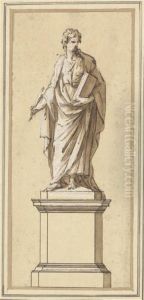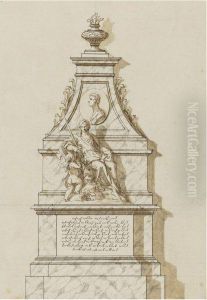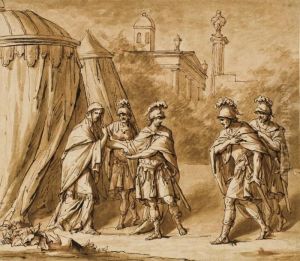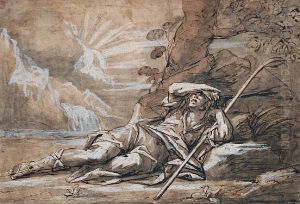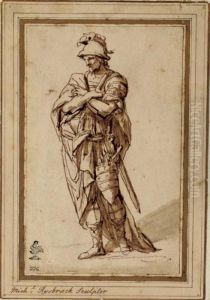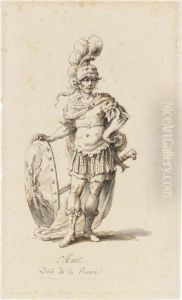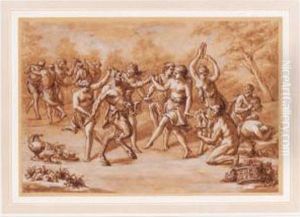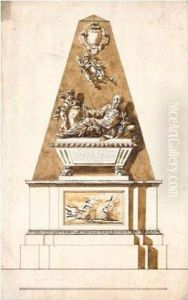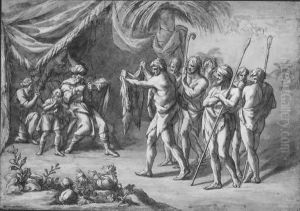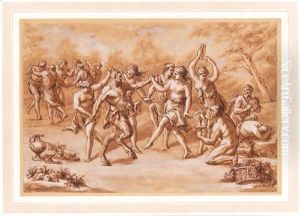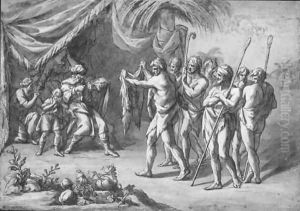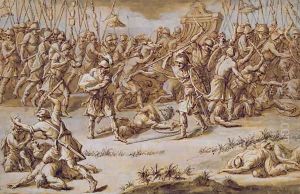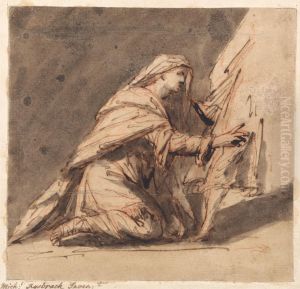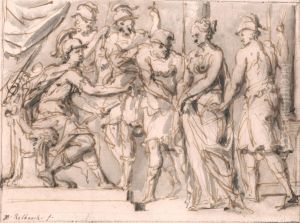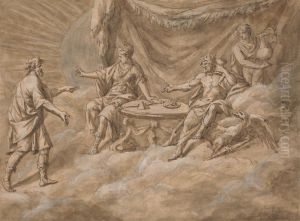John Michael Rysbrack Paintings
Johannes Michel (or John Michael) Rysbrack, born in Antwerp, Belgium in 1694, was a Flemish sculptor who achieved considerable fame in England during the 18th century. He was one of the foremost sculptors of his time, known for his skillful work in marble. Rysbrack's reputation was built on his ability to blend the Baroque style with the emerging taste for neoclassicism, creating works that were both dynamic and elegant.
Rysbrack's artistic journey began in his homeland, where he trained under his father, a painter, and likely received further education from other sculptors in Antwerp, a city with rich artistic traditions. In 1720, seeking greater opportunities, Rysbrack moved to London, where he quickly established himself as a leading portrait sculptor. The cosmopolitan environment of London, teeming with patrons and artists, provided an ideal backdrop for Rysbrack's talents to flourish.
He became particularly known for his portrait busts and monumental sculptures. Among his notable works are the statues of King William III in Bristol and Queen Anne in Westminster Abbey. Rysbrack was also renowned for his funerary monuments, which can be found in many English churches, showcasing his ability to convey the dignity and gravitas appropriate for such memorials.
Rysbrack's success allowed him to attract a high-profile clientele, including aristocracy and members of the British social elite. His work was characterized by a strong attention to detail and an emphasis on naturalism, setting a new standard for realism in sculpture at the time. Rysbrack's influence extended to his contemporaries and the next generation of sculptors, making him a key figure in the development of British sculpture.
Throughout his career, Rysbrack remained active and prolific. His legacy is preserved in numerous public and private collections, reflecting the widespread appreciation of his artistry during his lifetime and beyond. Rysbrack died in London in 1770, leaving behind a body of work that continues to be admired for its technical mastery and expressive power.
